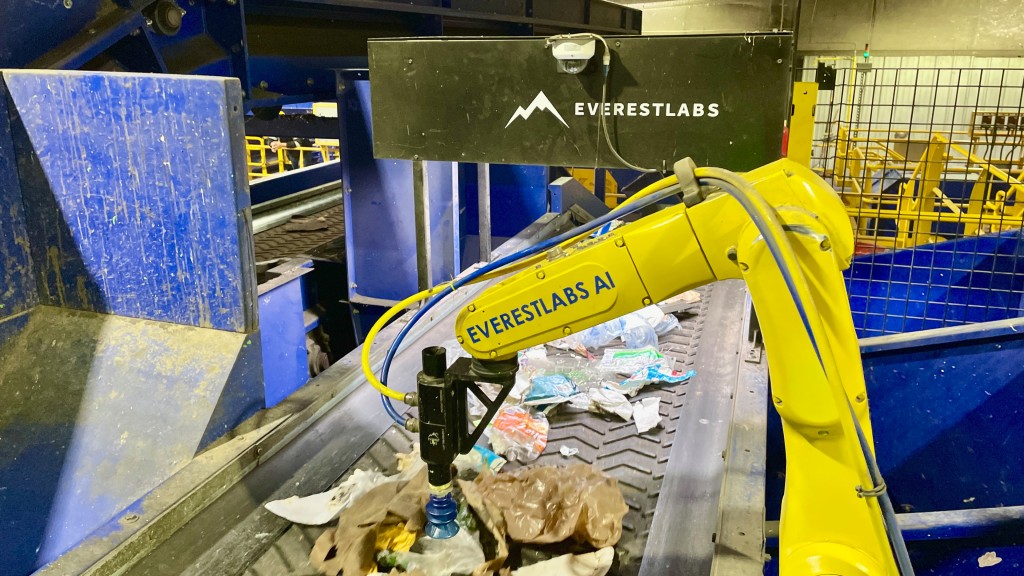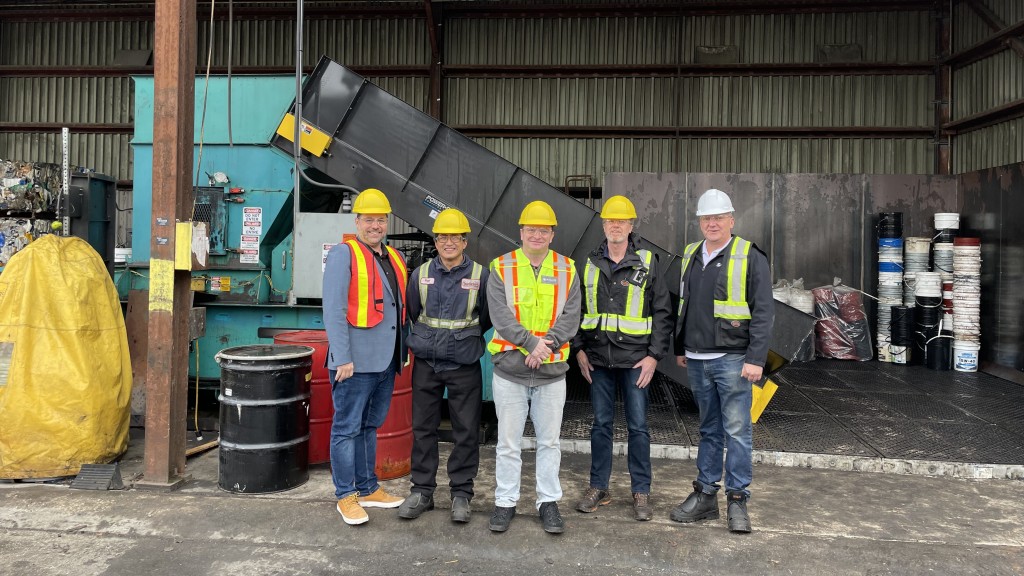
The success, or rather lack of success, of recycling policies and programs has received a lot of attention over the past few years as a spotlight has been placed on the staggering amount of recyclable materials ending up in landfills. However, we lack conclusive data or ground truth on what and how much recyclables are being lost. What we do know is that every time a piece of recycled material is sent to a landfill, there are substantial environmental and economic consequences. Therefore, stopping this flow of materials and increasing the nationwide recycling rate benefits our planet and our pockets. Since you can't manage what you can't measure, collecting accurate data on the volume, value, and material breakdown of recyclable materials being landfilled is crucial. With the rise of AI in characterizing waste and recycling streams, we can now collect accurate and consistent data about household recyclables that are ending up in landfills.
Quantifying the impact of material losses in recycling
In a study conducted by EverestLabs, depth-sensing cameras paired with vision AI models were used to identify recyclables in the recycling stream as they travel from collection operations through a materials recovery facility (MRF). Data produced by EverestLabs' AI was then used to determine the type, volume, and value of recyclable materials being sent to landfills. This study was conducted over two years by anonymous sampling from several last-chance lines in MRFs nationwide with a focus on commercially operated single-stream facilities. EverestLabs only pulled data on specific material types that are valuable recyclable commodities that can be readily reprocessed back into raw material. Evaluating losses for other material types like fibre, cardboard, and glass would add to these figures. These material types include HDPE, aluminum, PP, and PET.
This study found that:
- A total of 8.6 million tons or $4 billion worth of valuable recyclable materials are being sent to landfills annually through losses in residential recycling and at MRFs and recyclers.
- Only 32 percent or 3.6 million tons ($1.7 billion worth) of recyclable materials are diverted to MRFs annually.
- However, of this, 27 percent or 960,000 tons ($385 million) still end up in landfills through losses at MRFs and recyclers which can be recovered with automation technologies like robotics.
- Of the 960,000 tons ($385 million), aluminum makes up 41,000 tons ($57 million), PP5 makes up 135,000 tons ($19 million), HDPE makes up 152,000 tons ($98 million), and PET makes up 632,000 tons ($211 million).
- A typical single-stream MRF loses up to $2,000 of valuable recyclables annually for every ton per day they process. For example, a MRF that processes 500 tons per day can lose $1 million dollars annually but fortunately can be relatively easily recovered.
The economic and environmental benefits of reducing material loss
Capturing $4 billion of lost materials is important for the environment and the economy but it is a big undertaking. Luckily with new technology, like AI and robotics, and new legislation, increasing recycling rates to capture this is now more achievable than ever.
Enacting recycling legislation will play a crucial role in increasing the nation's recycling rate. Extended Producer Responsibility (EPR) is a new piece of recycling legislation that places responsibility on the producers for end-of-life packaging. This means producers will be held financially and operationally responsible for the recovery and recycling of their packaging. EPR legislation is being enacted in states across the US and will substantially help increase recycling rates as it will incentivize packaging recyclability and support end markets.
Implementing AI and robotics to meet EPR requirements
Under EPR, both recycling companies and brands are going to face greater scrutiny into their operations which is where AI and robotics can help. EverestLabs' robotic sorting equipment can be placed on any existing conveyor belt to augment the current sorting process delivering higher recovery rates which will be mandatory under EPR. At the same time, EverestLabs' recycling data can serve as a basis for EPR-driven audits. Additionally, AI-driven robotics is the only solution that can adapt to new packaging and material types subject to EPR programs within days to weeks of observing the new object.
If EPR and other recycling policies are successful, it will result in more material being diverted to recycling facilities. As the EverestLabs' data has shown, a lot of material is sent to landfills through losses at MRFs. As such recycling facilities will need to add new technology, like AI and robotics, to reduce missorting and increase recovery.
Reducing material loss in the recycling system
EverestLabs' AI, data, and robotics solution, RecycleOS, can dramatically increase recovery rates at recycling facilities without overhauling the whole recycling system. RecycleOS can be placed on any line in a recycling facility without any plant retrofits or downtime. It occupies the same space as a human sorter but recovers two to three times more material, with an impressive uptime of 99 percent, and requires minimal maintenance. EverestLabs' AI solution can also be deployed throughout a recycling facility to identify and capture data and analytics on what material is coming in, being recovered, and being sent to landfills. EverestLabs' AI and analytics can provide a recycling facility with various types of data including material characterizations, bale quality, landfill costs, lost value, and other data insights that can result in increased recovery, profits, and efficiency. Don't forget, if you can't measure it, you can't manage it. Therefore, having access to measurable data can assist recycling facilities in making operational improvements to boost material recovery across their plants.
Finally, to decrease losses at the household level, we need to increase household engagement in recycling through education and accessibility. The Recycling Partnership recently released its 2024 State of Recycling Report which identified that currently, only 73 percent of households have access to recycling and just 43 percent of households participate in recycling. To decrease losses at the household level, 100 percent of households need access to recycling from their home and they need to be educated on best recycling practices so they can fully engage in their recycling services. The Recycling Partnership has many programs in place to do just that. You can also learn more by reading our blog AI and Recycling Robots: Helping Us Recycle Better.
The path forward in recycling technology and policy
The findings from EverestLabs, alongside corroborating evidence from the Ball Corporation, shine a light on a grave inefficiency in our recycling infrastructure that bears significant environmental and economic tolls. With over $4 billion worth of recyclables being lost annually, the introduction of innovative technologies like AI and robotics, bolstered by the implementation of EPR legislation, presents a beacon of hope. These advancements not only promise a reduction in material loss but also an era of enhanced recycling efficiency and environmental stewardship.



